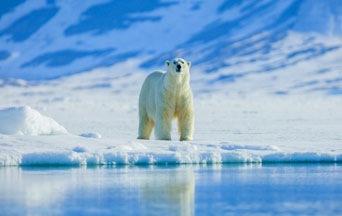
Polar bears used to dominate climate debates, with their images appearing everywhere. Fake scenes of polar bears in a zoo, not the Arctic, appeared in Al Gore’s dramatic 2006 film, An Inconvenient Truth. We were told the bears were on the road to extinction.
Today, we can no longer find them on posters, T-shirts, advertisements, milk cartons or headlines. In the 2010s, the focus shifted away from polar bears.
After years of blatant misrepresentation, global polar bear populations had significantly increased. From an estimate of 12,000 bears in the late sixties, there is now almost triple the number, with just over 32,000 in 2023. Eco-alarmists read the pawprint on the wall and threw the polar bears under the bus.
This is not the only case. In a piece in the Wall Street Journal, author Bjorn Lomborg notes a trend over the past two decades. Climate alarmists howl about developing climate catastrophes. When high-profile climate predictions fail to materialize, they abandon them quietly when the truth exposes their charade.
For example, activists once raised concerns about Australia’s Great Barrier Reef, claiming it was dying due to rising sea temperatures. However, a damaging hurricane in 2009 led to a record-low coral coverage in 2012. Media sensationalized the reef’s decline, predicting a further 50 percent reduction in coral cover by 2022, even prompting an “obituary” by The Guardian in 2014.
However, recent data paints an entirely different story. The Great Barrier Reef has seen increased coral cover in the last three years, achieving a new record in 2024. The eco-alarmists, however, are not reporting on the good news but hastening to the next fabricated crisis.
The chosen catastrophe was predictions about the sinking of the Maldives islands. These low-lying islands in the Indian Ocean supposedly faced imminent threats of disappearance due to rising sea levels caused by climate change.
Eternal and Natural Law: The Foundation of Morals and Law
However, recent studies indicate that the Maldives have not only survived but have grown in landmass over the last few decades. This unexpected resilience is primarily attributed to natural processes such as sediment deposition and the growth of coral reefs, allowing the islands to adapt and even thrive despite environmental changes.
The latest crisis that cannot go to waste is the “killer” heat waves, sensationalized as the new climate horror story. President Biden stated that extreme heat is the primary weather-related killer in the U.S.
Actually, cold-related deaths outnumbered heat-related deaths by twenty times, according to a Global Burden of Disease study. Research revealed that of the 7.7 percent of temperature-related deaths, 7.3 percent were linked to cold, while 0.4 percent were related to heat.
Even with rising temperatures, age-standardized extreme-heat deaths have decreased by nearly 10 percent in the U.S. due to increased prosperity, which allows better access to life-saving technologies—like electric-powered air conditioners!
However, this dramatic portrayal of extreme heat waves in the media often results in distorted policy decisions. Whether it’s heat or cold, affordable energy is a practical solution to prevent temperature-related fatalities. Environmentalists place obstacles to the development of clean energy in the name of climate change. They oppose energy projects, such as enhanced geothermal systems (EGS) and nuclear power, which help humans adapt to changing weather patterns with affordable energy.
Soon, extreme heat will join the other causes tossed by the wayside. The real threat to humanity is not extreme heat but extreme environmentalism.
Over $2 trillion is spent annually on climate policies globally. It’s time to reevaluate the current alarmist approach and prioritize sustainable solutions that benefit both people and the planet.
Scare tactics leave everyone confused, distressed and discouraged. Fear leads to poor policy choices that only further frustrate the public. Moreover, the virtue-signaling and ever-changing narrative of disasters has severely undermined public trust.
It’s time to “follow the real science” and not the fake news. The real story is that the polar bears are alive and well and living happily on ice flows that were not supposed to be there.
Photo Credit: © Ruzdi – stock.adobe.com

